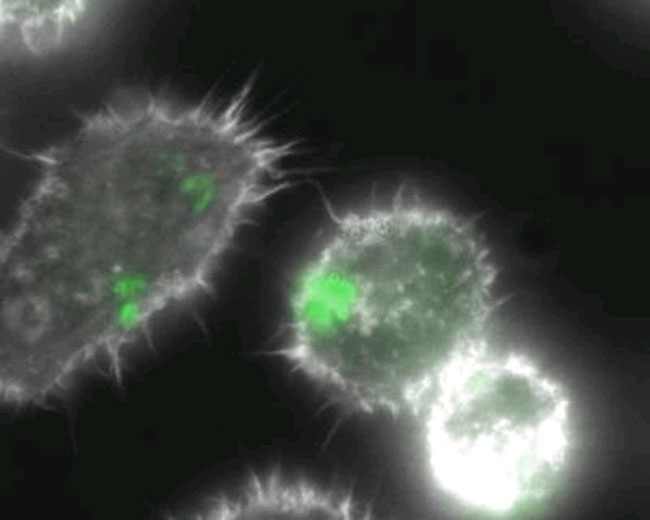Salmonella Has a Sweet Tooth

Just like people, Salmonella may have a soft spot for sugar. This type of bacteria, which can cause food poisoning, needs sugar — specifically glucose — to survive while it carries out infection, according to new a new study.
The finding could help scientists combat the microbes.
There are many different Salmonella strains, and some can cause salmonellosis, a disease with symptoms including diarrhea, fever, and vomiting. The infection can be fatal, but usually isn't. In the United States, there are around 40,000 reported cases of salmonellosis per year, according to the Center for Disease Control and Prevention (CDC). And since many cases go undiagnosed or unreported, the actual number of illnesses could be 30 times greater, the CDC says.
Previous Salmonella research has focused on trying to figure out how the bacteria cause illness and which genes are responsible for virulence. But not many scientists have looked at what keeps the bacteria going.
When Salmonella infect a host, they multiply inside immune cells called macrophages. These cells are attempting to destroy the bacteria, but instead, the germs continue to divide.
To learn more about how Salmonella sustain themselves, a group of UK scientists studied glycolysis — the metabolic pathway which involves the breakdown of glucose for energy. They mutated the Salmonella genes so that the bacteria were not able to transport or use glucose. They saw that the Salmonella stopped replicating inside macrophages, meaning that these bacteria were now dramatically weakened, or attenuated. In fact, there was a 322-fold decrease in the number of mutated Salmonella bacteria as compared to the number of normal Salmonella bacteria inside the macrophages.
The scientists also tested these mutated bacteria in mice. The mice that were infected with normal Salmonella showed signs of severe illness, while the mice that received the mutated bacteria did not have any symptoms.
Get the world’s most fascinating discoveries delivered straight to your inbox.
The researchers concluded that glucose and glycolysis are necessary for Salmonella to infect mice and macrophages. The findings also suggest that glucose is a major sugar used by the bacteria. The study was published online in April ahead of print in the journal Infection and Immunity.
Since the mutated Salmonella still prompt an immune response but do not cause symptoms, the researchers think these bacteria could be used for a vaccine that would protect against food poisoning. Such a vaccine would be similar in concept to other live vaccines that we have today, including mumps-measles-rubella (MMR) and the tuberculosis vaccine. With these, scientists first weaken an infectious agent to make it harmless, and then vaccinate people with it. You don't get the disease, but your immune system "remembers" the pathogen, and is able to attack it if it ever appears again.
The research group, which included members from the Institute of Food Research and University of East Anglia in the UK, filed for a patent on their mutated bacteria strains. Their work was funded by a Core Strategic Grant from the Biotechnology and Biological Sciences Research Council.

Rachael is a Live Science contributor, and was a former channel editor and senior writer for Live Science between 2010 and 2022. She has a master's degree in journalism from New York University's Science, Health and Environmental Reporting Program. She also holds a B.S. in molecular biology and an M.S. in biology from the University of California, San Diego. Her work has appeared in Scienceline, The Washington Post and Scientific American.


